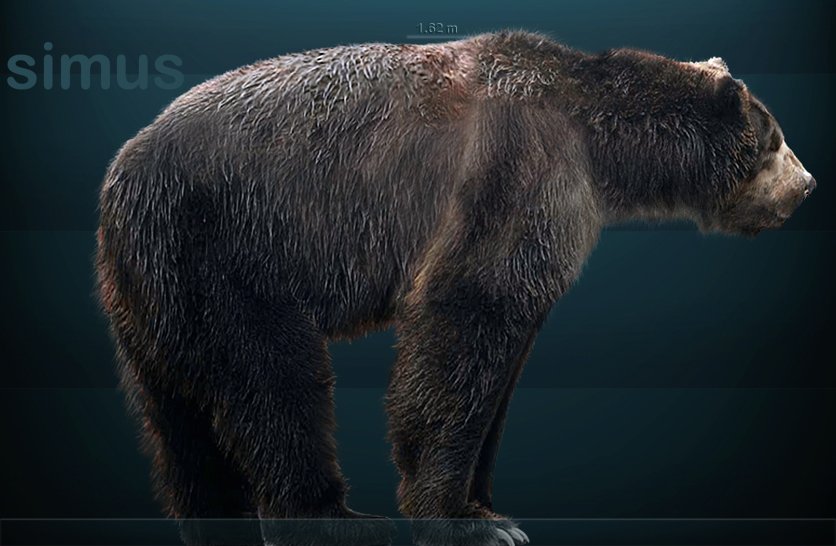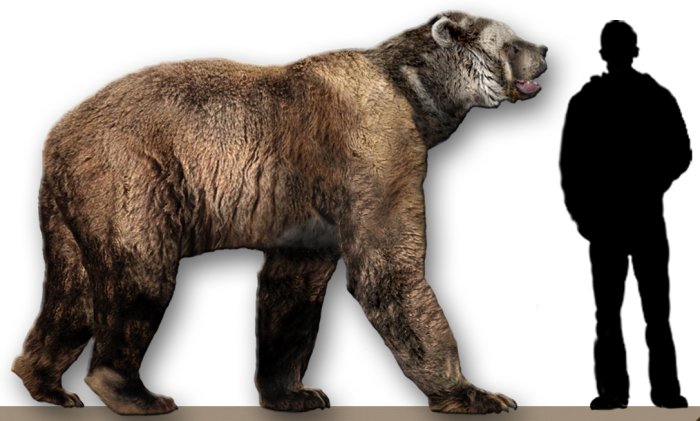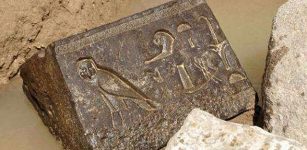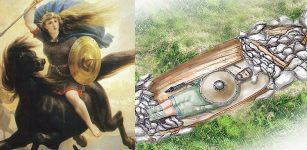Ancient DNA Solves The Mystery Of Giant Bears In The Americas
MessageToEagle.com – During the Pleistocene period, 2.5 million years ago to 11 thousand years ago giant bears weighing over 1,000 kg roamed both North and South America.
These huge animals belonged to a now practically extinct subfamily of bears known as , which is today only represented by the small, herbivorous Andean spectacled bear.
Scientists now think ancient DNA can solve the mystery of these giant bears and we might learn more about the evolution of what are believed to be the largest bears that ever walked the Earth.

Dr Kieren Mitchell, from the University’s Australian Centre for Ancient DNA, School of Biological Sciences, has published a science paper in Biology Letters. He writes that “the giant North American bears (Arctodus) and South American bears (Arctotherium) have long been believed to be each others’ closest relative. However, by comparing ancient DNA data obtained from representatives of the two extinct genera and comparing them with the living species, we were able to show that Arctotherium is most closely related to Tremarctos and not Arctodus.
See also:
Ancient DNA: So Far Oldest Genome From A 700.000 Year Old Horse – Sequenced
DNA Can Solve The Mystery Of The Bocksten Man – A 650-Year-Old Murder Case
Memories Of Your Ancestors Can Be Hidden In Your DNA
The implication of this result is that these bears represent a remarkable instance of convergent evolution, as giant bears appear to have evolved independently in both North and South America.

This convergent evolution would have arisen in response to similar environmental conditions on both continents, most likely an abundance of large herbivore carcasses (killed by smaller predators), which Arctodus and Arctotherium could effectively dominate, and a lack of competing scavengers.”
Arctodus pristinus inhabited more southerly areas, ranging from northern Texas to New Jersey in the east, Aguascalientes, Mexico to the southwest, and with large concentrations in Florida, the oldest from the Santa Fe River site of Gilchrist County, Florida paleontological sites.
Because its long legs it could run at speeds of 50-70 km/h (30-40 mph). According to Paul Matheus, paleontologist at the University of Alaska Fairbanks, Arctodus moved in a pacing motion like a camel, horse, and modern bears, making it built more for endurance than for great speed.
As we have previously seen, ancient DNA can shed light on many unsolved mysteirs. Just recently, researchers were able to examine ancient DNA of 92 pre-Columbian mummies and skeletons, between 500 and 8600 years old. This study helped to confirm what many have long suspected, namely that Native Americans were wiped out as a result of European colonization.
MessageToEagle.com
Expand for references









